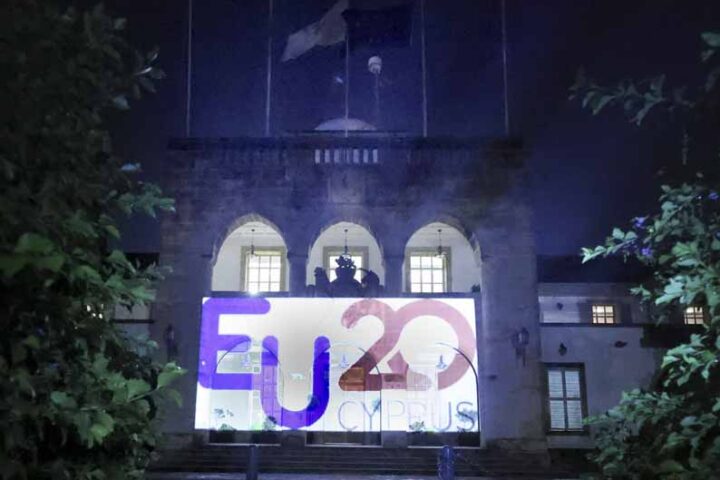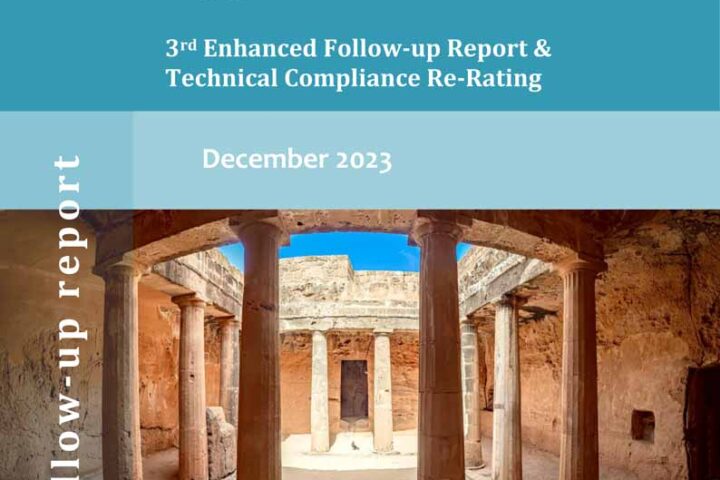The Turkish Cypriot Chamber of Commerce is in Brussels this week for discussions with European Commission officials about the Green Line regulation and other economy-related issues.
Whether it will come away with anything significant improvements to Green Line trade is another question.
Regulation 866/2004, to give it its proper title, was the EU regulation passed on 29 April 2004, just days after 76% of Greek Cypriots rejected and 65% of Turkish Cypriots accepted the reunification plan known as the Annan Plan, and just days before the Greek Cypriots joined the EU as full members.
There is a misperception that the Green Line regulation was invented to reward the Turkish Cypriots for voting yes. This is not the case, although it was more or less true of the direct trade and financial aid regulations—more of which below.
How the Green Line regulation was born
The real reason for the Green Line regulation was because the EU needed to find a regulatory way to deal with the anomaly that was a divided island joining the EU.
Under Protocol 10 to the Accession Treaty of Cyprus and nine others to the EU, the whole territory of Cyprus is considered part of the EU but the EU’s acquis communautaire (its body of laws) is “suspended” in “those areas of the Republic of Cyprus in which the Government of the Republic of Cyprus does not exercise effective control”—in other words, in the northern part of Cyprus.
Thus, the Green Line regulation was born, allowing trade in a limited number of goods originating in northern Cyprus and overseen by the Turkish Cypriot Chamber of Commerce, an organisation that was founded in 1958 and which therefore does not face the usual recognition problems.
Goods entering from the north would be treated as though they were entering the EU customs area.
However, that is not strictly true either. The Greek Cypriots, not wanting to pay “import VAT” on goods entering the south, asked (via Greece) for the VAT rules to be reversed, creating another anomaly that has in the end punished Greek Cypriots trying to sell their goods in the north.
Nevertheless, for a range of reasons explained in the 2008 PRIO report entitled “Intra-island trade in Cyprus: Obstacles, oppositions and psychological barriers”, by Mete Hatay, Fiona Mullen and Julia Kalimeri, expectations about what the Green Line regulation could achieve ended up being multiplied as the much more significant direct trade and financial aid regulations got put on ice.
The direct trade and financial aid regulations
The direct trade and financial aid regulations were drafted in July 2004 and initially were seen as part of a package.
The net effect of the direct trade regulation would have been to annul the impact of the 1994 European Court of Justice ruling that stopped Turkish Cypriot goods being given preferential treatment in EU countries.
Although the regulation does not refer to transport as such, the expectation was that it would allow Turkish Cypriot goods to be transported direct from ports and airports in the north, without having to go via Turkey, as they do now. This would significantly reduce the costs of Turkish Cypriot goods in EU markets.
Those who argued in favour of the regulation said that it would expose Turkish Cypriots to international markets and help businesses get ready for a solution, thus making them less of a burden on the Greek Cypriot taxpayer afterwards.
Those who argued against said that it would remove the Turkish Cypriots’ main incentive for a settlement, by taking away the de facto isolation they face as a result of non-recognition. Sticklers focused on the wording of the explanatory memorandum of the regulation, which referred to “third countries”.
The direct trade regulation was therefore never passed and the financial aid regulation, which was long linked to it, was passed only in February 2006.
The financial aid regulation money has now all been committed. But it created its own problems as Turkish Cypriots claim that too many contracts have gone to non-Turkish Cypriots.
Can Green Line trade be improved?
Is there anything that can be done to improve the operation of the Green Line regulation?
One problem is that it has remained an obscure and complicated issue, of interest only to the handful of businesses which trade across the Green Line, the chambers which have to deal with it, the small army of bureaucrats in Brussels and the odd geek who still takes enough interest to write about it.
Moreover, after years of consistently strong growth, Green Line trade faltered in 2009.
Between the first full year of operation in 2005, north-south sales rose rapidly, from EUR 1.70 mln in 2005 to 4.14 mln in 2007 and a peak of 6.79 mln in 2008. However, sales dropped by 11.5% to EUR 6.01 mln in 2009.
A re-jigging of the categories in 2009 means that a strict comparison of products across the two years cannot be made. However, it is clear that the main drop was in sales of vegetables, which remain the largest category. These fell from sales of EUR 3.17 mln in 2008 to EUR 1.36 mln in 2009.
Unfortunately, all the people who would know exactly why this happened were out of reach in Brussels at the time of writing, but an educated guess is that this was something to do with the drought, which hit the south more than the north. The drought more or less ended in 2009, thus probably reducing southern demand for potatoes.
Much more successful were sales of fresh fish—a fairly late addition to allowable products—which increased from EUR 148,781 in 2008 to EUR 651,542 in 2009.
Sales of plastic products also rose, from EUR 707,063 to EUR 894,778, while sales of building stone and chemicals products also increased.
Thus, for some products, at least, there does seem to be scope for expansion.
Yet total sales across the Green Line still represent only about 7% of sales by Turkish Cypriots to the rest of the world and the litany of complaints from Turkish Cypriot businesses about political, psychological and regulatory obstacles to trade are the same today as they were in the 2008 PRIO report.
Ways to dismantle the barriers
To help try to redress the balance the PRIO authors proposed a number of ways forward to tackle all three obstacles. These are as valid today as they were then. They were:
*That the political leaders openly encourage trade (helping to remove the psychological barriers).
*That they tackle the practical obstacles to trade (such as the ban on mobile phone roaming or bank payments).
*That the chambers and EU improve the dissemination of information in the various practical ways suggested.
One might also add the expansion of the Green Line regulation to include dairy products as soon as they meet EU hygiene standards.
Greek Cypriots and Turkish Cypriots came close to agreeing this in 2008 but faltered at the last minute.
Perhaps now, as the Greek and Turkish leaders meet again to give another push to the peace talks, they could try again.
It would send a strong message that they are serious about helping Greek Cypriots and Turkish Cypriots create a common economic future together.
Mary Curran







